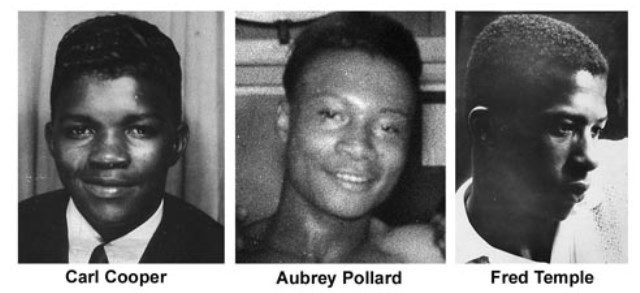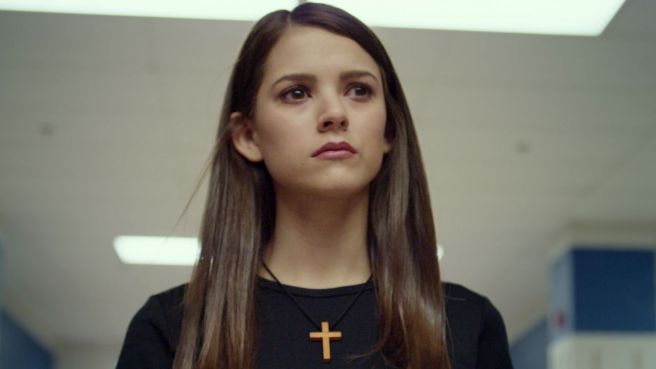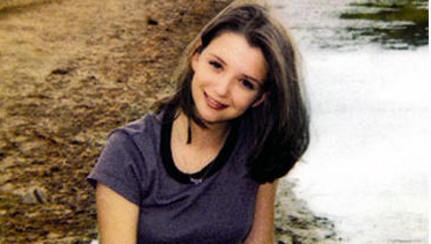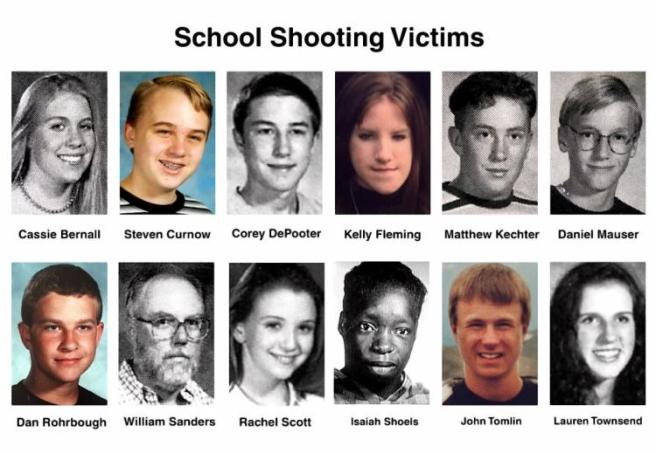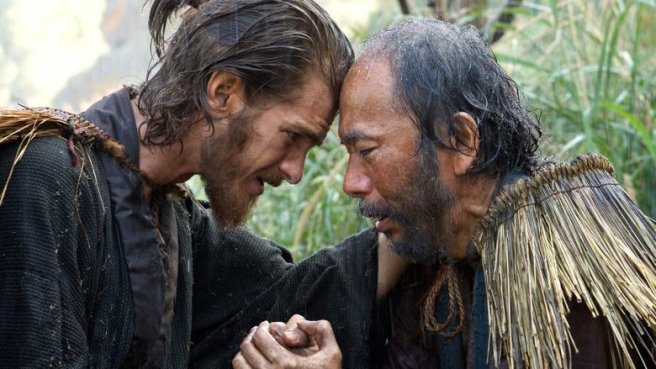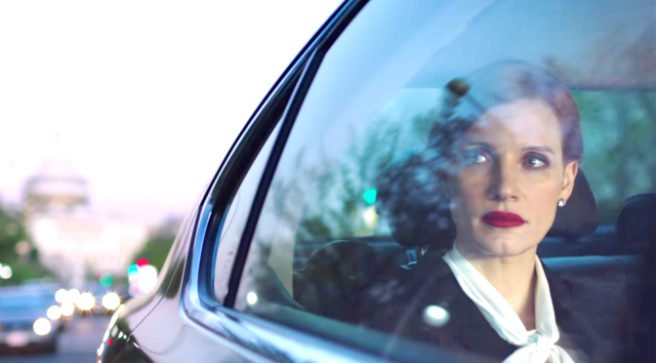I cannot believe this happened in America…and yet, in a most depressing way, I actually can.
This is my review of Detroit.

On July 23rd, 1967, an after-hours unlicensed bar called “Blind Pig” had been raided (for the third time, according to historical records). As bar patrons were taken into police custody, a Molotov cocktail was thrust at police, setting off a riot that would throw all of Detroit into anarchy. With residents looting and officers arresting left and right, trust between kinsmen had evaporated. The spirit of hate and violence found its way to the Algiers Motel, where various people had sought refuge from the chaos outside. When one of the motel guests, a man named Carl Cooper, shoots a starter pistol out the window, the police outside are alarmed and suspect there to be a sniper. They end up at the doorstep of the Algiers Motel and from there is the beginning of a horrific night: Twelve people–ten black men and two white women–are harassed and interrogated by three Detroit police officers for several hours in a search for a rogue sniper. False executions, beatings and, eventually, actual deaths–specifically the murders of Carl Cooper, Fred Temple, and Aubrey Pollard occur within the walls of the Algiers Motel.
The Hits
So I did some research on the 12th Street Riot and the Algiers Motel tragedy (it’s commonly called an “incident,” but I’m calling it a tragedy), and based on what I read and the information I collected, I think that both events were recreated the best way they could have been. The movie opens with the Blind Pig raiding and the riot that ensues provides context leading up to what happened at the Algiers Motel. The first twenty minutes have a sense of grand scale and visual storytelling. If anything, this film is a thoughtful depiction of two things: the mob mentality and anarchy. We see the bar patrons and observers angrily question the nature of the arrests in the opening scene, and it is made clear that raids such as these are commonplace but infuriating for all who are subjected to it. This certainly does not justify the Molotov cocktail being thrown at police, but in terms of the narrative it does provide context. The first hour presents a picture of harassed people succumbing to blind anger and a plethora of police officers– who were probably not prepared for a riot to literally conquer an entire city–reacting the best and worst way they know how. I mentioned anarchy and that is because Detroit has a beleaguered past and the descent of a city to the depths of chaos is masterfully portrayed in this film. Characters are seen running into grocery stores and rushing out with food, but because we are first shown looters fueling the flames, the sense of who is friend and who is foe is significantly blurred, which is typically how things play out in real-world riot situations. There’s a particularly heart-wrenching scene where it had been previously established that there were rogue snipers targeting officers. With this in mind, we cut to a young black girl peeking through closed blinds. The camera then focuses on an officer who looks up and raises his gun at the window where we can only see the girl’s eyes…but not her face.
Now let us talk about the actual Algiers Motel storyline itself. Halfway through the second act of the film, I found myself thinking that the Algiers Motel plot is both a strength and a weakness of the film. I will explain the strengths first.
As a depiction of authoritarianism and realistic racism, this movie does a damn good job at showing both. It is clear right from the get-go that the officers who are interrogating the Algiers Motel residents are less concerned with finding the starter pistol and are fueled by the thrill of having power over vulnerable human beings, as well as their own personal prejudices. In terms of realistic racism, kudos go to Will Poulter, whose performance as Officer Philip Krauss is humanistic and terrifying. This is not a cartoony racist; this is a racist person who you could conceivably pass by at the grocery store. He’s not a moustache-twirling villain and he’s not given any overtly racist lines to spout out. The racism of Philip Krauss is all in his attitude, in his treatment of the rioters leading up to what happens at the Algiers Motel. A nuanced portrayal of an individual who sees certain groups of people as subhuman is far more unnerving. You don’t have to use the “N-word” to be a racist. It is how you perceive and treat those who are of a different race than yourself that speak volumes about your view on human dignity.
The Misses
If you watch the second trailer for Detroit (Detroit Trailer 2 on YouTube, if you’re interested), it shows a gripping scene from the film of John Boyega trying to recollect and explain to two detectives what happened at the Algiers Motel.
I am sad to say that this scene is not the first scene of the movie and it really should have been. The raiding of the Blind Pig bar is the opening scene, and as compelling as it is, it lacks the introduction of our main characters. This leads into the main problem with Detroit: there is no one main character to gravitate towards and this is a chaotic story that really needs a consistent point of view. John Boyega’s security guard protagonist Melvin Dismukes is marketed in both trailers as the film’s moral center. However, the movie struggles to balance the character arches of both Melvin Dismukes and Larry Reed, the lead singer of The Dramatics, played brilliantly by Algee Smith. As a result, John Boyega’s character is certainly sympathetic, but doesn’t evolve into an empathetic three-dimensional character. Because the film is more focused on what happens rather than getting to know all who were involved, there’s no one character to connect with and feel the story through, which makes Detroit more of a spectator experience rather than a cinematic participation. This is why Detroit is an unfocused narrative that would’ve made an excellent docudrama on the History Channel.
Here is the downside of the Algiers Motel plotline: As the second act of the film goes on, the Algiers Motel story devolves into an audience endurance test. To be fair, because everything that happens in this plotline is intertwined, i.e. if one scene is cut from it, entire context is lost, I don’t know how the filmmakers could have shortened the second act. That said, there is a way to properly lengthen such a heavy plotline so that it doesn’t become too long and lose impact.
I would like a final point that having John Krasinski, or Jim from The Office, play a hotheaded lawyer in the last twenty minutes of your gritty drama is a little distracting. Just saying.
Overall Detroit will make you angry. Whether you are black, white, whatever your background is, the ending is an egregious miscarriage of justice worthy of righteous anger. Despite its setbacks in characterization and narrative focus, Detroit gives us a consummate picture of a frightening time in American history that we are seeing play out once again in 2017, a time when everyone thought they were in the right and nobody took the time to even consider that they could be wrong. It depresses me and yet it does not surprise me that this tragedy happened in America. Let us do our very best to ensure that another Algiers Motel does not happen in the land of opportunity again.
Saint Martin de Porres and Saint Josephine Bakhita, pray for us.
